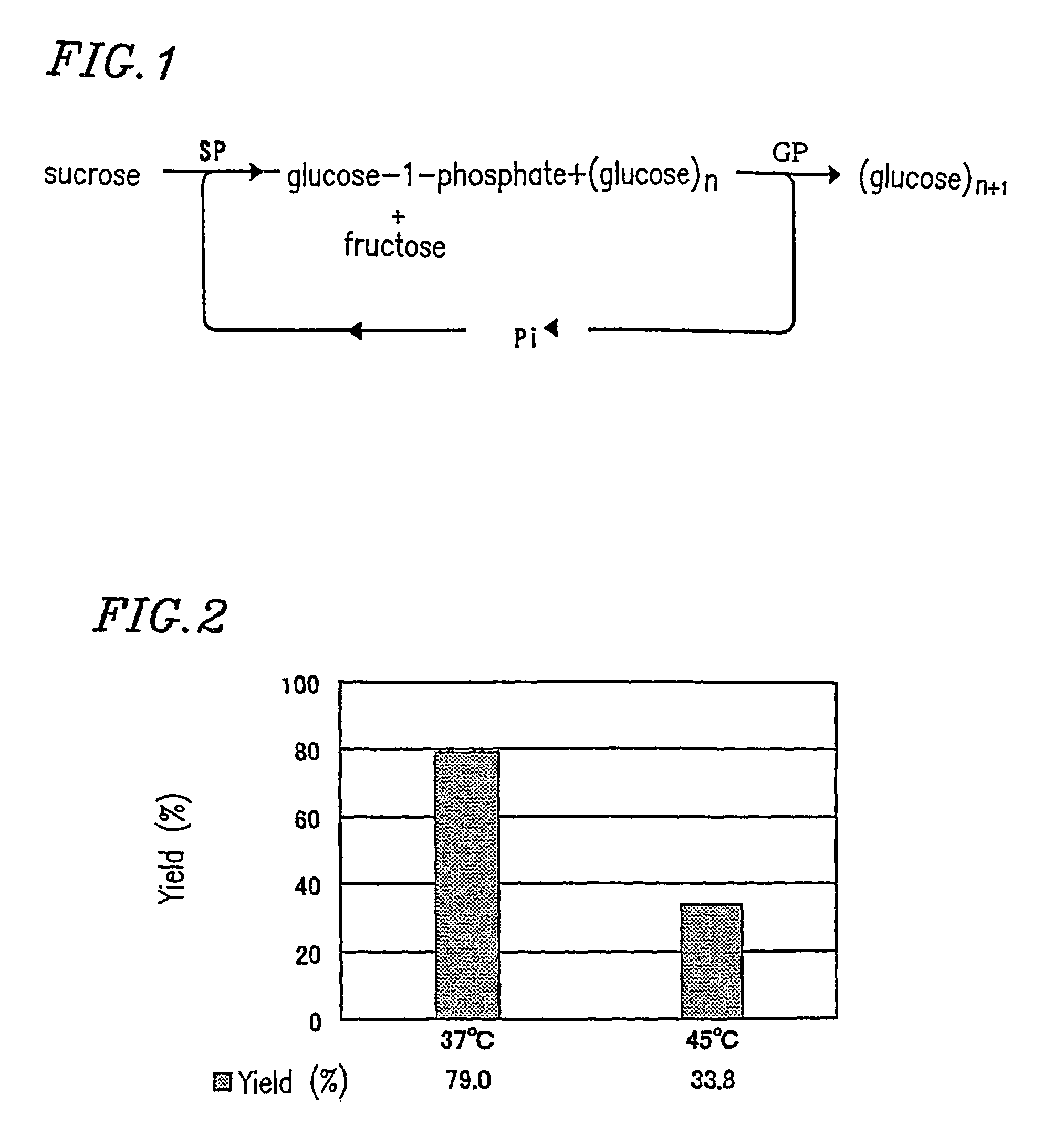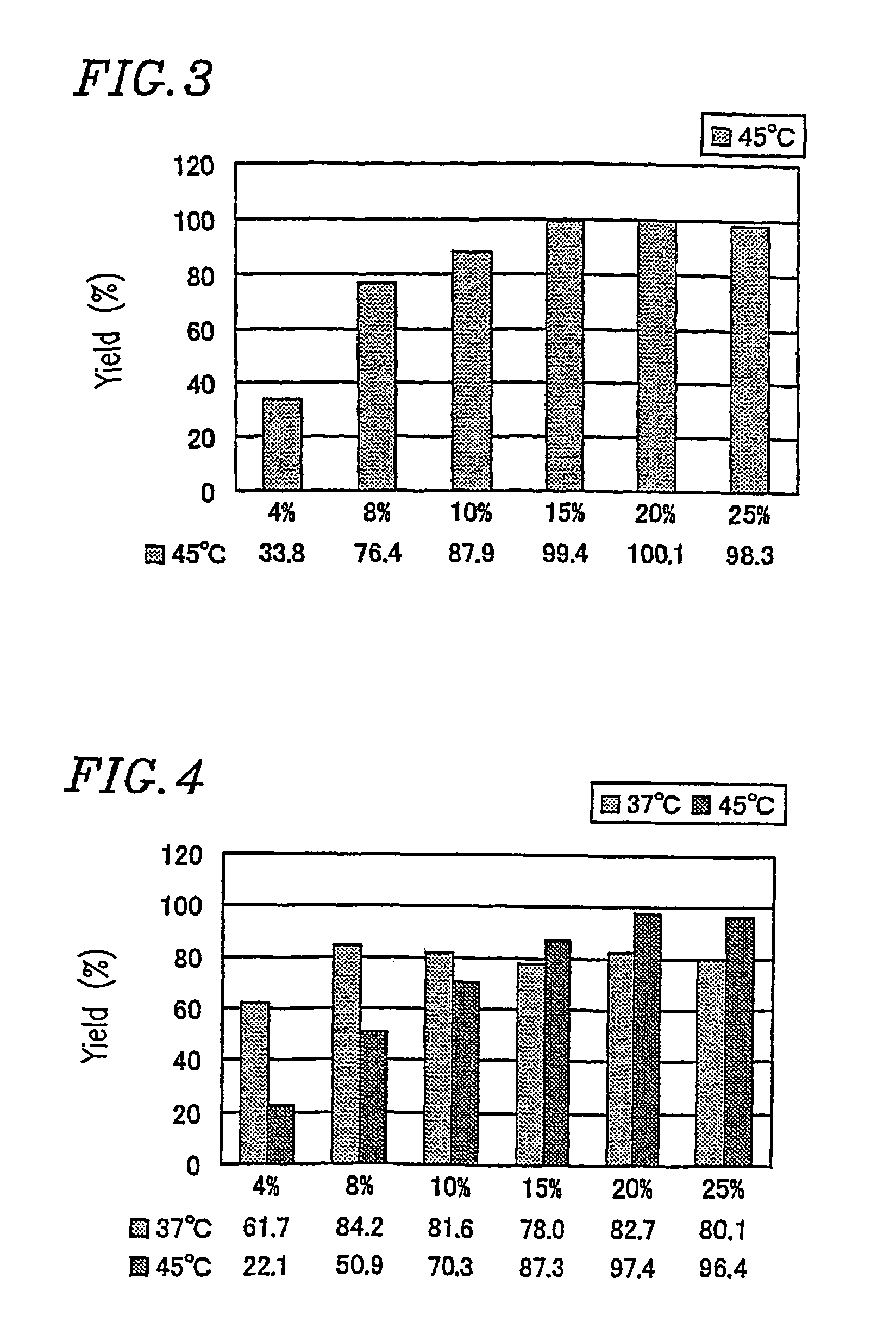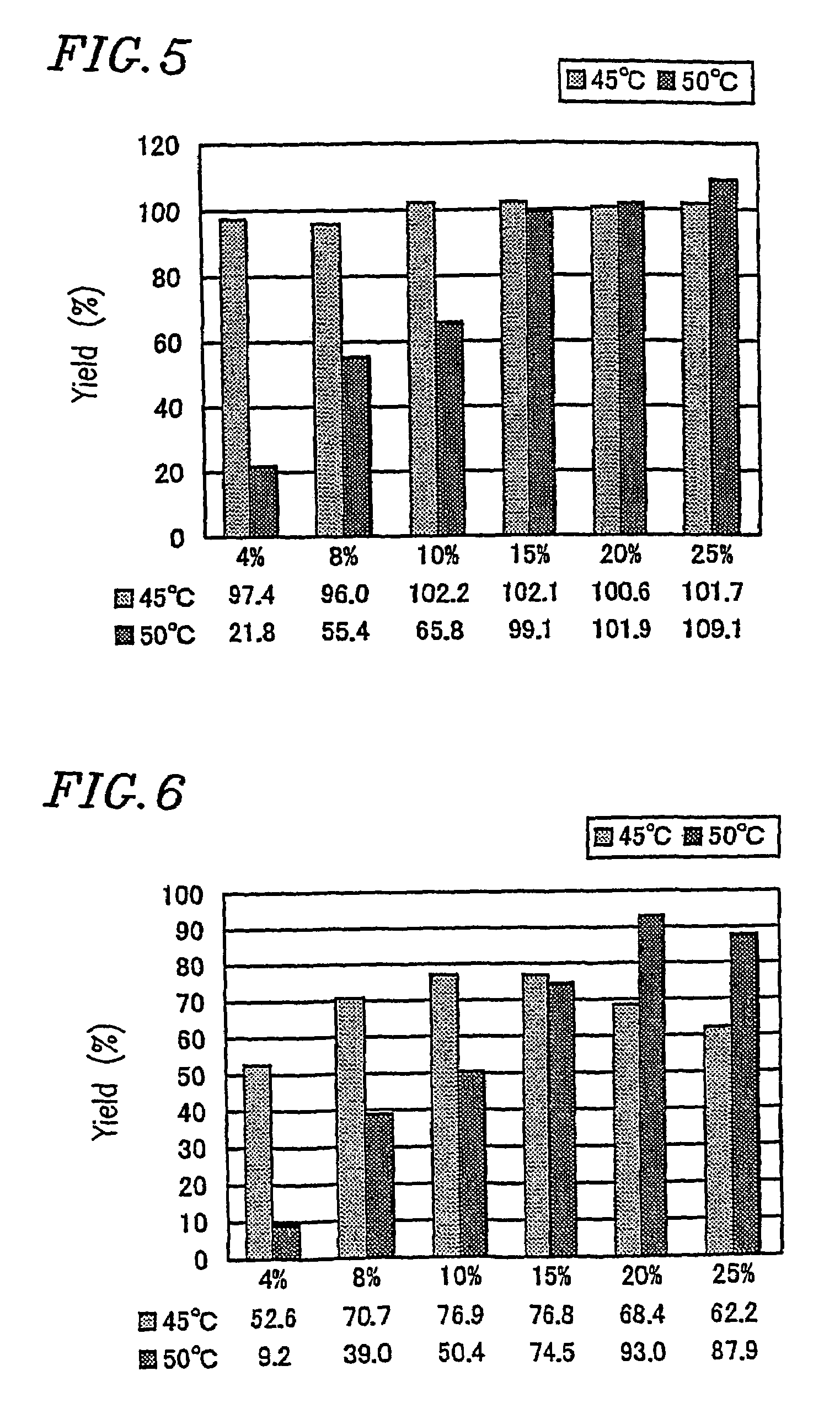Production method and preparation method of glucans
a production method and glucan technology, applied in the field of glucan production methods, can solve the problems of difficult to obtain substantially pure amylose, limited reports on structural alteration of starch by extending its -1,4-glucan chain, and difficulty in obtaining starch containing amylose at an arbitrary composition ratio, etc., to achieve the effect of reducing the amount of enzyme required and high temperatur
- Summary
- Abstract
- Description
- Claims
- Application Information
AI Technical Summary
Benefits of technology
Problems solved by technology
Method used
Image
Examples
examples
[0274]The present invention will be described in more detail by way of the following examples. The present invention is not limited only to the following examples.
[0275](1. Method for Measurement and Calculation)
[0276]Each substance in the present invention was determined by the following measurement methods.
[0277](1.1 Quantification of Glucose)
[0278]Glucose was quantitated using a commercially available measurement kit. In the measurement, glucose AR-II coloring reagent (manufactured by Wako Pure Chemical Industries, Ltd.) was used.
[0279](1.2 Quantification of Fructose)
[0280]Fructose was quantitated using a commercially available measurement kit. In the measurement, F-kit D-glucose / D-fructose (manufactured by Roche) was used.
[0281](1.3 Quantification of Glucose-1-phosphate)
[0282]Glucose-1-phosphate was quantitated using the following method. 600 μl of a solution containing glucose-1-phosphate appropriately diluted was added to 300 μl of a measurement reagent (200 mM Tris-HCl (pH 7....
examples 1-1 to 1-5
and Comparative Example 1-1
Amylose Synthesis Using Various Sucrose Concentrations and High Reaction Temperature)
[0342]Amylose synthesis was conducted using reaction mixtures whose compositions (at the start of the reaction) are shown in Table 2 below.
[0343]
TABLE 2SPGPSucroseG7Pi(U / g(U / gReactionNo.(%)(mM)(mM)sucrose)sucrose)temperatureComparative4220101045° C.example 1-1Example 1-18440101045° C.Example 1-210550101045° C.Example 1-3157.575101045° C.Example 1-42010100101045° C.Example 1-52512.5125101045° C.G7: MaltoheptaosePi: Potassium dihydrogen phosphate-disodium hydrogen phosphate buffered solutionSP: Leuconostoc mesenteroides-derived sucrose phosphorylaseGP: Potato-derived glucan phosphorylase
[0344]After the reaction, the yield of synthesized amylose was determined according to Section 1.6 above. The results are shown in FIG. 3.
[0345]The sucrose concentration was increased from 4% (comparative example 1-1) used in conventional methods to at least 8% (Example 1-1 to 1-5), making it...
examples 2-1 to 2-5
and Comparative Examples 2-1 to 2-7
Amylose Synthesis with Small Amounts of Enzymes
[0347]Amylose synthesis was conducted using reaction mixtures whose compositions (at the start of the reaction) are shown in Table 3 below.
[0348]
TABLE 3SPGPSucroseG7Pi(U / g(U / gReactionNo.(%)(mM)(mM)sucrose)sucrose)temperatureComparative42205537° C.example 2-1Comparative84405537° C.example 2-2Comparative105505537° C.example 2-3Comparative157.5755537° C.example 2-4Comparative20101005537° C.example 2-5Comparative2512.51255537° C.example 2-6Comparative42205545° C.example 2-7Example 2-184405545° C.Example 2-2105505545° C.Example 2-3157.5755545° C.Example 2-420101005545° C.Example 2-52512.51255545° C.G7: MaltoheptaosePi: Potassium dihydrogen phosphate-disodium hydrogen phosphate buffered solutionSP: Leuconostoc mesenteroides-derived sucrose phosphorylaseGP: Potato-derived glucan phosphorylase
[0349]Specifically, in Examples 2-1 to 2-5 and comparative examples 2-1 to 2-7, the amount of the enzymes was half that...
PUM
| Property | Measurement | Unit |
|---|---|---|
| temperature | aaaaa | aaaaa |
| reaction temperature | aaaaa | aaaaa |
| temperature | aaaaa | aaaaa |
Abstract
Description
Claims
Application Information
 Login to View More
Login to View More - R&D
- Intellectual Property
- Life Sciences
- Materials
- Tech Scout
- Unparalleled Data Quality
- Higher Quality Content
- 60% Fewer Hallucinations
Browse by: Latest US Patents, China's latest patents, Technical Efficacy Thesaurus, Application Domain, Technology Topic, Popular Technical Reports.
© 2025 PatSnap. All rights reserved.Legal|Privacy policy|Modern Slavery Act Transparency Statement|Sitemap|About US| Contact US: help@patsnap.com



